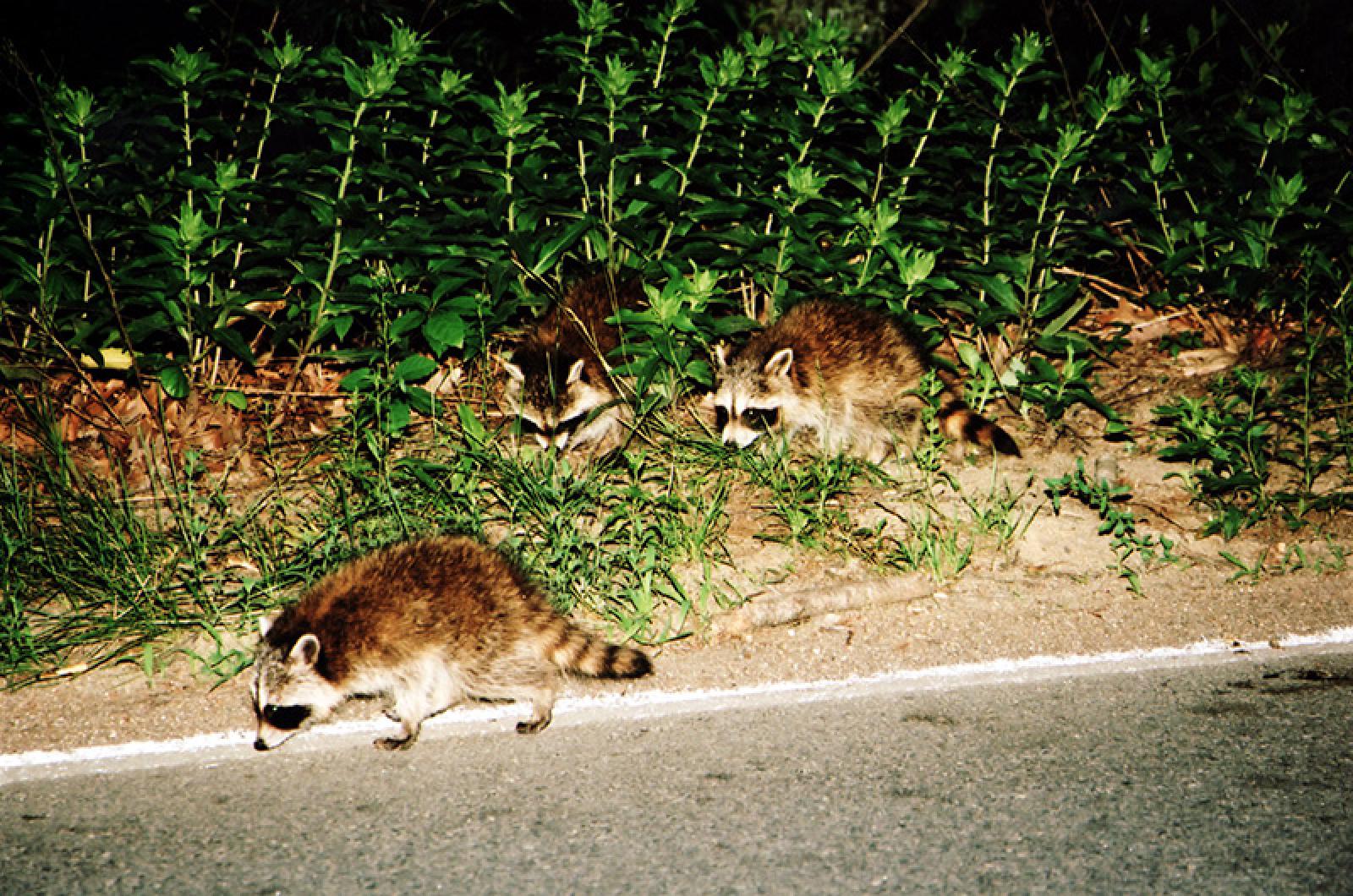Who is reporting them? Everyone, it seems, this season. Raccoons and their babies (called kits) seem to be everywhere, both day and night – climbing trees, wandering under the porches or decks, roaming the beaches and generally strolling about yards, woodlands and even Island towns.
Anecdotal reports indicate that there are more than ever this season, a population boom of these masked mammals. Are there too many? The raccoons would say no, though folks on both sides of the issue are concerned.
Friends and fans of these curious creatures are worried about their daytime presence and reports of so-called orphans abound. We’ve even heard of multiple cases of healthy raccoons crossing the Sound on the ferry (with well-meaning travellers) to wildlife rehabilitation facilities off-Island.
Before you transport these or any animals, consider their condition and lifestyle. They may or may not be orphaned (mothers are likely nearby or else these healthy animals are asserting their independence) or need human help. And, note that relocating wildlife is illegal in Massachusetts and only injured wildlife need a rehabilitator. Healthy animals should be left in their own habitats.
Raccoons, while most often thought of as nocturnal animals, can be active any time of the day or night. In fact, it is normal to see raccoons in the day during certain phases of their lifecycles.
Consider a nursing female, who needs extra food and nutrition to feed her kits, or who spends the night protecting them so must forage during the day for nourishment. Additionally, when those hungry kits begin to explore beyond their dens, they haven’t learned all the rules for safety and hunting. They can be out during the day with their mother or on their own. This time of year, when kits are out and about, is considered the season of maximum raccoon visibility. And, finally, food is the ultimate motivator; raccoons will be out whenever they can easily find some.
The belief that raccoons that are out during the day must have rabies is false. Rabies currently isn’t found on the Vineyard and, though it certainly can come to the Island, observing behavior can help ascertain a raccoon’s disease status. If the animal seems healthy and normal (though out during the day), it likely is healthy and normal.
Sick animals will usually appear sick; stumbling, foaming at the mouth and acting aggressively are all clues to an unwell animal. Remember that in addition to rabies, raccoons can carry roundworm, distemper and other diseases, so handling them is always a risk.
The Island isn’t the only place that is seeing an increase in raccoon numbers. In the last 80 years, this animal’s population has surged, especially in cities and suburbs. Between the 1930s and 1980s, the North American raccoon population has increased 15 to 20 times!
Credit their success to their intelligence, adaptability, nimble hands and acute senses. Pet owners may disagree, but one study shows that raccoons are smarter than cats and dogs and are closer to monkeys in intellect.
So, by all means, give them a wide berth if you cross their (or they cross your) path (though please don’t cross the Sound) – but out of admiration and respect, not out of fear. Remember, it won’t be a coon’s age before they disappear back into the landscape to rest out the off season.
Suzan Bellincampi is director of the Felix Neck Wildlife Sanctuary in Edgartown, and author of Martha’s Vineyard: A Field Guide to Island Nature.




Comments
Comment policy »